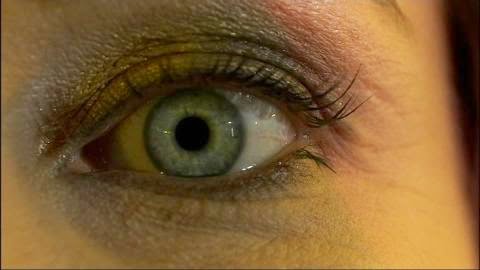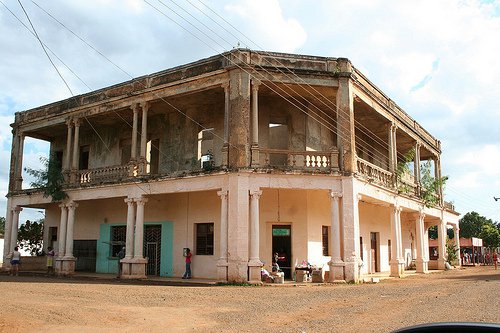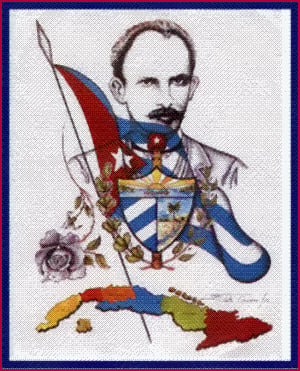Placing a massacre of Cuban civilians into context
Originally published in The PanAm Post blog The Canal on July
7, 2013
“In Cuba there are missing and it is
known who has disappeared them, the latter are heroes for the government….There
are more than 20 murdered children waiting to be claimed and mothers and
grandmothers who were not allowed to look for them when they were killed off
the coast of Havana” – Oswaldo Payá Sardiñas, El
Nuevo Herald, March 18, 2005*
“These are
victims of the tugboat! Victims … of a cruel tyrant that claims to be defender
of women and children in Cuba”
Cuba is being subjected to a totalitarian dictatorship that for over half a century has erased and rewritten inconvenient chapters of its history. As was the case with the Soviet Union under Stalin the scale of the crimes can not be accurately measured during the life of the dictator, but occasionally state security and the propaganda machinery unable to cover up a particular crime offers an insight into the regime’s underlying nature. The events of July 13, 1994 is one such instance.
What happened
The July 13, 1994 massacre that took place just six miles off the Cuban coastline and claimed 37 lives, the majority women and children is one instance where the true nature of the Cuban government was exposed. Three Cuban families seeking a better life away from the dictatorship sought passage aboard the Cuban tugboat the “13 de Marzo.” The captain of the tug was part of the group wanting to leave. The tugboat left Havana on Wednesday, July 13, 1994 in the early morning hours.
Six miles from the Cuban coast line the “13 de Marzo”tugboat was confronted by three other tugboats . Amnesty International in their 1997 investigation reported that the vessels which attacked the “13 de Marzo” were named and identified as belonging to the Ministry of Transport:
“…Polargo 2”, “Polargo 3″ and “Polargo 5″. According to survivors, “Polargo 5″ was the vessel which acted most aggressively
towards them. The fourth vessel which followed along behind them and which
appeared to be directing operations was believed to belong to the Cuban Coast
Guard, which is part of the Ministry of the Interior.”
Despite the “13 de Marzo” tugboat attempting to surrender
and the mothers holding up their children begging for mercy the other tugboats
continued to ram them and use high pressure hoses to blast the passengers
overboard. Following this they began to circle the wreckage with the aim of
creating a whirlpool affect to ensure that any survivors would drown. Their
plans were dashed however when a Greek trawler passing by witnessed the
massacre. It was then and only then that the attack was suspended and the
survivors picked up.
International Investigation
International human rights bodies and organizations investigated the incident. The United Nations Human Rights Commission’s special rapporteur on Cuba made the following observation on October 24, 1995 in his report on the human rights situation in Cuba to the UN General Assembly:
International Investigation
International human rights bodies and organizations investigated the incident. The United Nations Human Rights Commission’s special rapporteur on Cuba made the following observation on October 24, 1995 in his report on the human rights situation in Cuba to the UN General Assembly:
Although the Government maintains that the authorities
bore no responsibility for what was considered to have been an accident, the
Special Rapporteur received testimony from some of the survivors indicating
that Government launches from the port of Havana tried to stop the 13 de Marzo
with pressurized water jets and then deliberately rammed it, causing it to
sink. Non-governmental sources informed the Special Rapporteur that the number
of persons who died was not 32, as the Government had stated, but at least 37
and that the families have for a year now been asking for an investigation to
be initiated.
On October 16, 1996 the Inter-American Commission on
Human Rights (IACHR) released Report Nº 47/96 Case
11.436 Victims of the Tugboat “13 de Marzo” vs. Cuba. Among the conclusions
reached in the investigation was that:
The Cuban State is responsible for violating the right to life (Article 1 of the American Declaration of the Rights and Duties of Man) of the 41 people who were shipwrecked and perished as a result of the sinking of the tug “13 de Marzo”, which events occurred seven miles off the Cuban coast on July 13, 1994. The persons who died that morning are: Leonardo Notario Góngora, Marta Tacoronte Vega, Caridad Leyva Tacoronte, Yausel Eugenio Pérez Tacoronte, Mayulis Méndez Tacoronte, Odalys Muñoz García, Pilar Almanza Romero, Yaser Perodín Almanza, Manuel Sánchez Callol, Juliana Enriquez Carrasana, Helen Martínez Enríquez, Reynaldo Marrero, Joel García Suárez, Juan Mario Gutiérrez García, Ernesto Alfonso Joureiro, Amado Gonzáles Raices, Lázaro Borges Priel, Liset Alvarez Guerra, Yisel Borges Alvarez , Guillermo Cruz Martínez, Fidelio Ramel Prieto-Hernández, Rosa María Alcalde Preig, Yaltamira Anaya Carrasco, José Carlos Nicole Anaya, María Carrasco Anaya, Julia Caridad Ruiz Blanco, Angel René Abreu Ruiz, Jorge Arquímides Lebrijio Flores, Eduardo Suárez Esquivel, Elicer Suárez Plascencia, Omar Rodríguez Suárez, Miralis Fernández Rodríguez, Cindy Rodríguez Fernández, José Gregorio Balmaceda Castillo, Rigoberto Feut Gonzáles, Midalis Sanabria Cabrera, and four other victims who could not be identified.
The IACHR
made three recommendations:
1) that the Cuban State conduct an exhaustive investigation in order to identify, prosecute and punish those responsible for sinking the tug “13 de Marzo”
2) that the Cuban state recover the sunken boat and the remains of the victims and hand them over to their relatives and
3) that the Cuban State pay fair compensation to the surviving victims and to the families of the dead for physical and nonphysical damages, including emotional distress.
Placing the July 13, 1994 massacre into context
The state security apparatus in Cuba was trained by the East German intelligence service, known as the Stasi, the most brutal security apparatus behind the Iron Curtain rivaling the Soviet KGB in brutality and surpassing it in its espionage capabilities. It is also important to note that Fidel Castro visited the Berlin Wall and paid homage to the soldiers who were extrajudicially killing Germans trying to make it across to West Germany in 1972:
“The comrades of the party and the citizens of socialist Berlin have told us with great satisfaction about the activity of the border troops, speaking with great admiration for you and for your services.”
The orders
issued to these border guards by the East German government were simple and
without mercy:
“It is your duty to use your combat … skills in such a way as to overcome the cunning of the border breacher, to challenge or liquidate him in order to thwart the planned border breach… Don’t hesitate to use your weapon even when border breaches happen with women and children, which traitors have often exploited in the past.”
The actions of Cuban border patrols on July 13, 1994, and instances such as the June 1993 use of machine gun fire and hand grenades on defenseless swimmers trying to reach the U.S. Guantanamo Naval base that drew an official protest from the United States government at the time, are not aberrations. Unfortunately, this was not an isolated incident, talking to Cuban exiles randomly in Miami have heard accounts of others who died in the same manner trying to flee the island over the past half century. It just happened to be one of the few times when it was properly documented and an official complaint lodged.
The men responsible for the July 13, 1994 tugboat massacre where given medals and described as heroes by Fidel Castro. This should not be a surprise when considering that he had praised the East German border guards that orders to kill men, women, and children whose sole “crime” was trying to reach freedom on the other side of the Berlin Wall.
New information that has emerged
Fifteen years after the events of July 13, 1994 I had the opportunity to sit down with Jorge García who lost 14 family members that day. Jorge learned the names of those who took part in the massacre of the “13 de Marzo” tugboat. The one who was the most aggressive, the bloodiest and oversaw the operation was Jesús González Machín, captain of the “Polargo 5″ that sunk the “13 de Marzo” tugboat. He actually had the opportunity to meet him and photograph him. Although Machín denied having sunk the “13 de Marzo,” he said something of tremendous legal importance: “I didn’t work that day. They called me at 6 p.m. that there was an operation at the port.”
That is to say that from 6 p.m. on July 12, 1994, at the Port of Havana, Cuban state security was there to direct the operations of the sinking of the “13 de Marzo.” They knew what was going to happen. It was a double crime. They could have stopped or impeded the departure of the tugboat. They followed orders and sank the boat.
Following the massacre, family members imagined that the bodies would be returned to them. The government organized Rapid Response Brigades and blocked anyone from visiting the home. The dictatorship had persons with weapons to intimidate. Jorge García was detained and interrogated on several occasions. The longest detention was 15 days. His daughter, María Victoria García, was one of three of his family who survived the massacre and spoke out:
They tried on several occasions to kill my daughter, because she was the first to speak out and contradict the regime’s official narrative.
He and his daughter are now exiled in Miami. Jorge maintains an archive of
information and has interviewed the survivors of the massacre and the families
of the victims. He has laso confirmed that the number killed that day was 37.
The initial investigation had placed the number at 41 with four unknown but has
now been confirmed to be the 37 listed above.
The continuing
need for justice
Although it has been 19 years the bodies of the victims have not been returned to the families and the men responsible have not had to answer for their crimes before any tribunal. Nevertheless, as has been seen in Argentina, Ethiopia, and Cambodia justice may be delayed but still applied against those who commit human rights atrocities. The victims of the July 13, 1994 tugboat massacre still need justice.
* Oswaldo Payá Sardiñas was killed i n Cuba on July 22, 2012 following a suspicious car crash.
http://cubanexilequarter.blogspot.com/2013/07/placing-massacre-of-cuban-civilians.html
Although it has been 19 years the bodies of the victims have not been returned to the families and the men responsible have not had to answer for their crimes before any tribunal. Nevertheless, as has been seen in Argentina, Ethiopia, and Cambodia justice may be delayed but still applied against those who commit human rights atrocities. The victims of the July 13, 1994 tugboat massacre still need justice.
* Oswaldo Payá Sardiñas was killed i n Cuba on July 22, 2012 following a suspicious car crash.
http://cubanexilequarter.blogspot.com/2013/07/placing-massacre-of-cuban-civilians.html















No hay comentarios:
Publicar un comentario